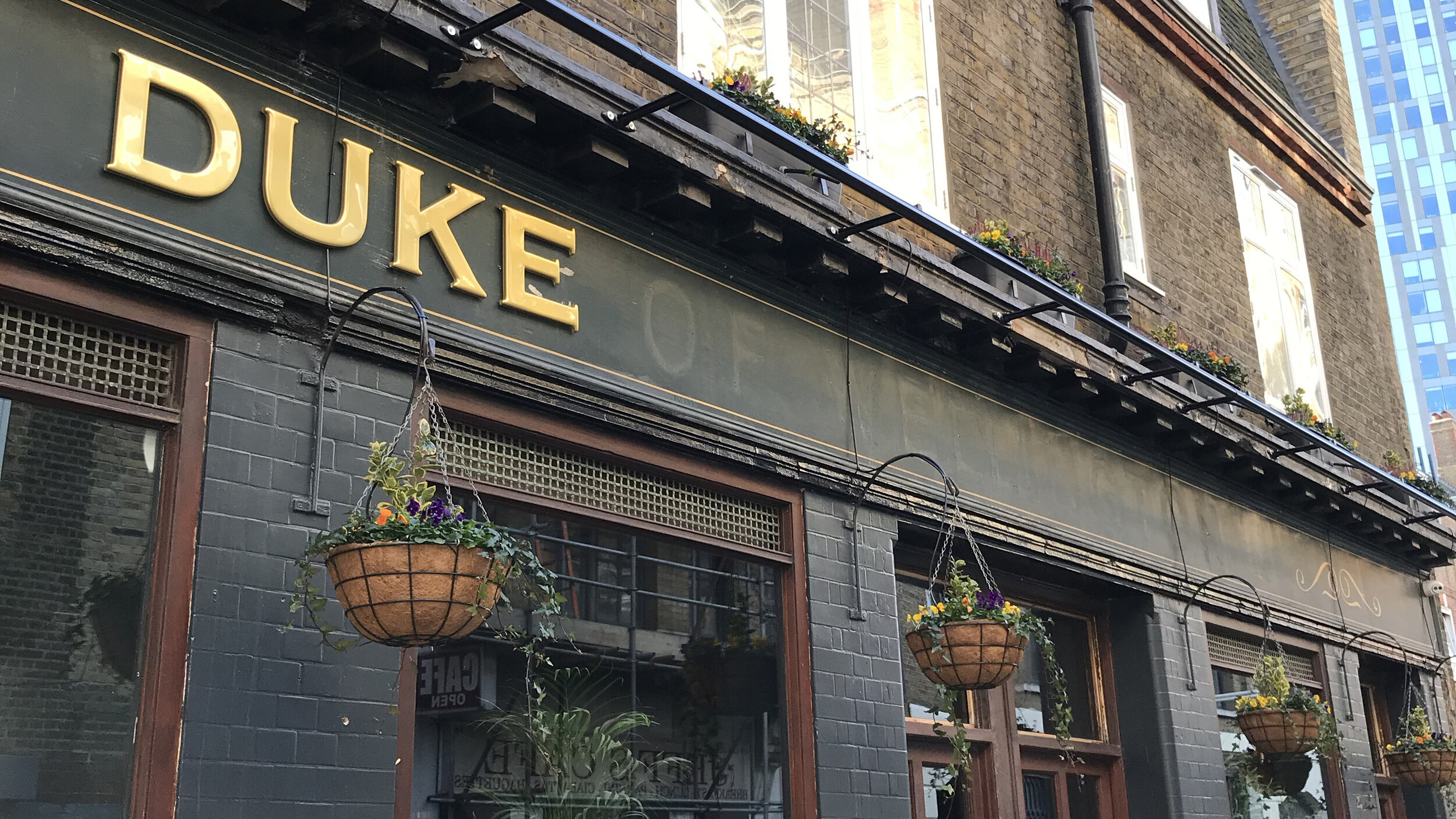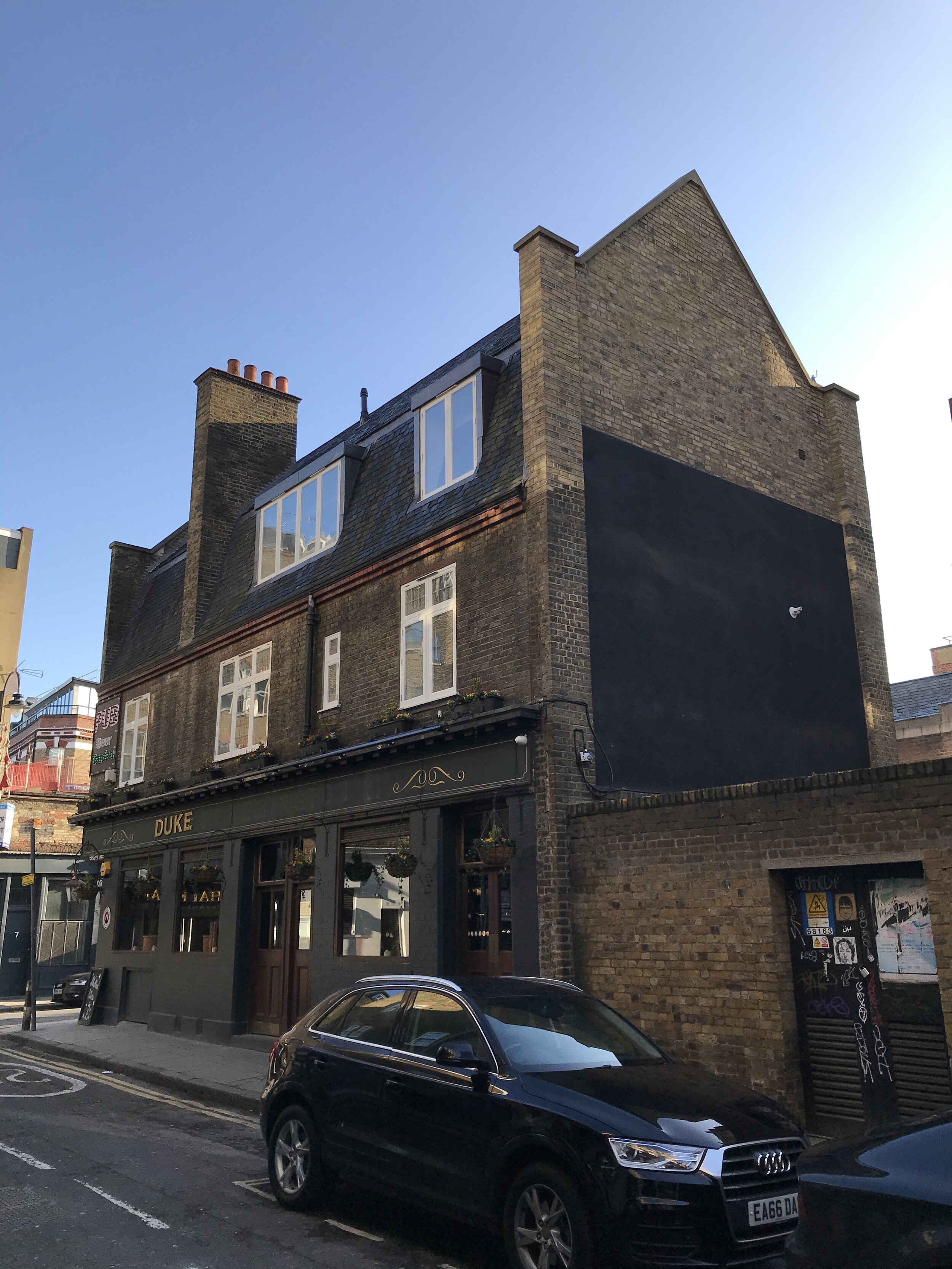The Duke of Wellington, Spitalfields

The reluctance of an ageing population to accept the changes of the next generation can make for an uneasy pub experience in certain parts of London. It can see an almost segregated drinking landscape where old campaigners staunchly frequent the rundown pubs of the old manor which the Millennials enjoy arguably sanitised wine-bar type hostelries.
The world turns at a rapid pace and some people cling passionately to a long vanished romantic past. This might not even be their own, but from a time of yesteryear where people didn’t lock their doors, there was no crime and people were proud and scrubbed their doorsteps every week. It was likely the time of their parents or Grandparents. Change is often hard to stomach for most people but when it happens, in this case so rapidly, to the fabric of an area or community it can cause resentment or ill-feeling.
I’ll start by commenting I’m pleased that The Duke of Wellington has reopened after a long closure and fears it had gone for good. I had grave concerns it would be as bad, if not worse, than two other local horror show new Spitalfields sanitised wine bar-esque reboots. That’s not the case here and I was delighted they’ve kept the original name and I am pleased to report it’s not as bad as I thought it would be.
However, it’s just not somewhere I would visit again after re-ticking it off in late 2019. It’s important to set the scene and impress that the pub in its old life was a very special place. It was everything a traditional City meets East End backstreet boozer should be: battered and worn with a homely lived in feel, old carpet, an eclectic clientele, darts and a real East End buzz. I’m sad to report that the new interior has none of that.
But I’ve surmised maybe there is a reason for that. Perhaps we old school purist moaners don’t realise that we’re not valued anymore as we aren’t the target demographic of the new businesses. This area is particularly transient with a mainline train station, Brick Lane Market along with scores of offices and most of the people that drink here don’t live here. It’s likely the owners, who are putting hotels upstairs in these “pubs”, see the ageing residents or aficionados of traditional pubs as dinosaurs and are courting the out of own pound selling expensive cocktails and beds for the night.
Young people out partying now don’t want hushed conversations around mushroom bar stools, fruit machines and to talk about which nag just came in at Kempton. The contrast now in terms of behaviours between Baby Boomers and Generation X v’s Millennial’s is the biggest and most extreme gap in the generations possibly ever.
The old want the traditional; battered, bruised and lived in, and things to stay the same whereas the young, judging by Instagram, want everything shiny and new, almost like Hollywood’s occasional fictional portrayal of reality. Central London sometimes resemble Dubai now in terms of bling, the cars and the need for everything to be high-end and ‘instagrammable’.
It’s the same with the High Street and everywhere looking the same now. They all house chain stores and a generic look. Arguably this is happening to rebooted pubs with a template of craft and pizza output and / either an off the shelf blasted brickwork and wooden floors look or bland uniform grey pain by numbers. Certain observers will question what happened to the pub carpet, a mainstay until the late 1990s, the brass, cosy snugs, snob screens and etched glass.
A mate in the business has already predicted that these newish bar-style reboot places will start to close in high numbers in the next 3-5 years as punters get tired of the samey repetitive feel to all establishments. We could potentially see a saturated market once again, as we did when the docks closed in the East End and there wasn’t a requirement for so many pubs.
This has already started with The Bethnal Green Tavern (originally The Camden Head then The Misty Moon) closing its doors in December 2019 after just 2 years of trading. With The Sun and also Coupette (originally The Albion then Bohola House and later Bar Valiente) both a stone’s throw away competition was stiff and although its good as a hub if lots of pubs are close together there is a wonder if there could be too many in certain areas. However, it reopened again just prior to the first Covid lockdown in March 2020 under the umbrella of Graceland (backed by Barworks) which showed pubcos willingness to take a chance. However, drinking behaviours and changes in demographics mean that long term there might not be the demand for a pub being on every corner as was the case in yesteryear.
If I was visiting The Duke of Wellington for the very first time and (I’m not judging or putting people in boxes here) was likely under 30 I’d probably think it was okay / great. But as someone who visited it before it now has no soul and seems even the ghosts of its past life appear to have moved on to haunt a pub elsewhere.
The rig is extremely good and that helps me to summarise what I think it’s trying to be; a tap room in the shell of an old pub. It’s great the exterior is (for now) the same and you can do a lot worse in the area but for any purist I’d recommend hitting The Pride, White Hart or Bar Locks.












